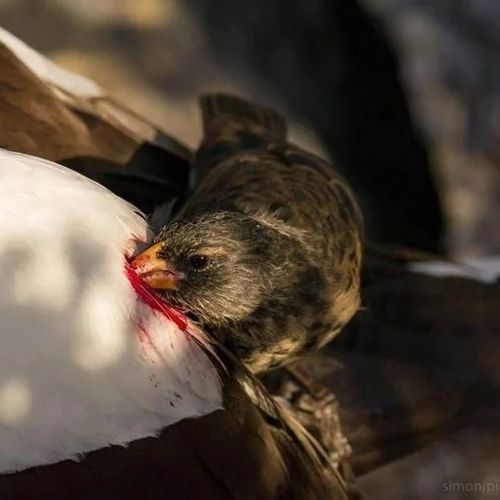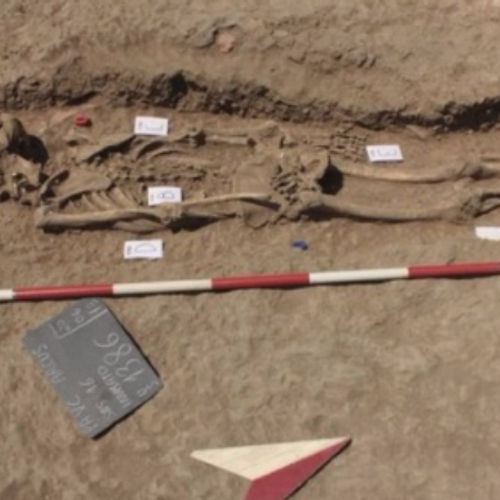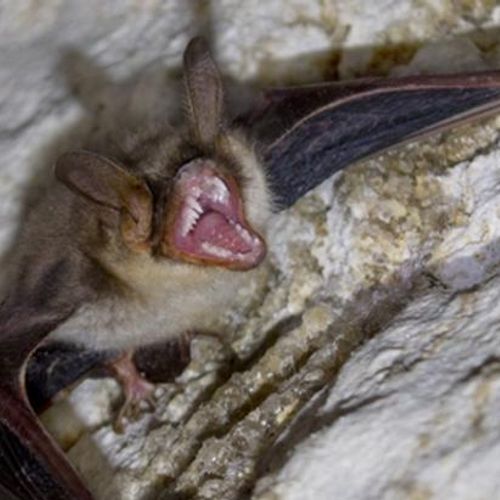
| Added | Thu, 11/05/2017 |
| Источники | |
| Дата публикации | Thu, 11/05/2017
|
| Феномены |
The first mention of the walking dead appeared in the culture of the South-Eastern Slavs in the early middle Ages. By the XVIII century they had spread so that, for example, in Poland, the belief in vampires was equated with heresy.
Even more fueled the fascination of society these mythical creatures stories of the time about the epidemic of vampirism across Eastern Europe.
Historian David Keyworth (David Keyworth) tries to explain the origin of belief in vampires in an article published in the journal Folklore.
Stories on the walking dead has inspired many scientists to study this topic. The most famous was the work of an Abbot of the Benedictine Augustin Calma, published in 1746. According to his observations, the concept of vampirism was not known in Western Europe until the late seventeenth century — before undead bloodsuckers remained exclusively European phenomenon. But is it really?
The zombie of hamlet's father
According to the chronicle of the XII century Historia Rerum Anglicarum, composed by William Newburger, his countrymen willingly believed in the living dead. For example, he talked about some of the walking corpse, appearing in the vicinity of the castle, Anuntis, breathing which has infected the locals with a fatal disease.
Two brothers whose father died from this infection, decided to get rid of the monster. They dug up his grave to the cemetery and found the body filled with blood, "if it were a well-fed leech". The brothers carried the corpse outside the village and burned at the stake, having cut and destroyed him supposedly still beat the heart. After that, the infection retreated from the village, and more of the walking dead has not been seen.
However, despite the colorful description, William Luborsky does not mention that living corpse feed on human blood. On the contrary, all the misery he had caused indirectly: people died because of the malicious breath of the walking dead, not because of his actions.
American historian Jeffrey Burton Russell (Jeffrey Burton Russell) also mentions in his hagiography. Two peasants ran away from Berlinskogo Abbey in the village, which was owned by a knight, warring with the local monks. The monks offered prayers to one of the saints, after which the serfs died.
Subsequently, they were seen on the roads carrying their coffins. Has received reports from local residents who said that the dead in the way of wild animals fighting at night at the doors of their houses and call peasants. Soon the village began plague.
The villagers, having obtained permission of the clergy, opened the graves of the restless dead, and found their bodies clean and fresh, with faces and clothing of the deceased was covered with blood. They cut off the head and tore out the heart, which subsequently burned. Despite the fact that after that, the plague ended, the village has long been empty.
English the living dead are strongly reminiscent of draugrov — walking corpses of medieval Norse mythology. For example, in the sagas mentioned Tralf Twisted Leg, which after his death has caused a lot of trouble the tribesmen.
After a while, they exhumed his remains and found the body black and swollen, and then gave him fire. It's like the story of English walking dead, but nowhere is there even a hint that draugry drank human blood.
Although some historians claim that by the end of XII century the British ceased to believe in living corpses, their references are found in the sources until the seventeenth century. For example, in "hamlet" by Shakespeare there are lines showing that the "Ghost" of the father of the Prince of Denmark was by no means ethereal:
...Why are your buried bones
Was rastali shroud; why the tomb was
Where you were peacefully laid to rest,
Rashaw the heavy marble grin
You vomited again? What it means
What are you, a soulless corpse, in the whole gland
Come again in the moonlight...
Dead jealous
It can be argued that in England the XVII century, in many stories about encounters with the dead it was just about the walking dead, not spirits.
In the book the famous Puritan theologian Richard Baxter "the undoubted existence of the spirit world" contains a story about how one woman of Glamorgan one day woke up and found his bed dead mate, who had intended to lie down next to her.
According to Baxter, after the widow had refused her ex-husband in the vicinity, he returned after three nights and cruelly beat all households (which, according to Scandinavian sagas, was doing draugry). The dead were accompanied by the unbearable stench of a decaying body.
Richard Burton in his book "Kingdom of darkness" described a similar incident: the wife of a noble Lord, who cheated on her, returned from the grave, when he proposed to his mistress just days after the death of his wife. He did not heed this sign, and canceled the wedding. Then dead again appeared to him and said, "Why don't you come to me?". Then the man got sick and died. He was buried in the same grave as his wife.
In the English sources of the XVII century, there are many other testimonies on the walking dead. Often in these descriptions they have black skin and sunken eyes, sometimes turned into animals.
In England quite a long believed in their existence. The same can be said about draugr: evidence of meetings with them are found in Icelandic sources to the end of the XVII century.
Silesia and Greece
The walking corpses were also found in Silesia — region, much of which is the territory of modern Poland. In his work 1655 "Antidote to atheism," Henry Moore told about a shoemaker from Breslau, who, in 1591, who slits their own throat, and in six days has risen from the grave. Residents said that he had materialized in their beds and tried to strangle them.
The city authorities exhumed the body of a man eight months after his death and put on display: he allegedly looked like live and gave off an unpleasant smell. However, citizens continued to report nightly visits of the dead. Six days later he was buried under the gallows, but it did not help — soon the body again had to dig. Eyewitnesses noted that it "has significantly gained weight" — probably swollen.
To rid yourself of annoying the living dead, he was subjected to the above-mentioned procedure: cut off the head, legs and arms, opened the chest and took out a heart that was "as fresh and untouched by rot, as in freshly slaughtered calf", and then burned the remains.
In Greece there are many stories about the so-called vrykolakas — the walking dead. For example, Joseph Pitton de Tournefort, French botanist, talked about how it was present at the exhumation of the dead on the island of Mykonos. According to local farmers, this body once belonged to their countrymen. After his death, he wandered at night and was bullied by a local, so his body decided to explode and stop the excesses.
Pitton wrote that the first corpse he opened the belly, not the chest, and then, piercing the diaphragm, and finally reached his heart, which caused the crowd cheering. Heart burned, and the remains re-buried, but after a few days it turned out that it didn't stop dead. His body was dug up again and now it burned completely.
Age of vampires
All of these cases, however, do not describe the vampires in the way in which they are entrenched in popular culture as blood-sucking creatures. Stories about them appear only at the end of the XVII — XVIII centuries.
In 1745 saw the release of the book "the Journey of three English gentlemen," which contained a description of the Eastern European vampires:
"Vampires leave their graves at night, attack people sleeping, suck out all the blood and destroy them. They attack men, women and children, without distinction of sex or age. Survivors of the attack, complain of breathing problems and discouragement, and soon die...
After death, they also become vampires, so to avoid the spread of this evil it is necessary to pierce a corpse, in whose veins still flowing blood, as if it was alive with a wooden stake. Sometimes the body of a vampire from the grave dug and burned, after which outrages him stop."
A detailed description of vampires in the magazine Mercure Galent in 1693. According to him, these creatures live in Poland and Russia owns them irresistible thirst for the blood of others. The article notes that they are so full with the blood of their victims, that "flows out of every orifice of their bodies."
The most famous in the XVIII century the vampire was a Arnaud, Paola, who has risen from the grave and gave rise to many other vampires, terrorizing the Serbian village Medvegia from 1727 to 1732.
This case was investigated by the local authorities. Was subsequently published the report of this investigation entitled "Seen and discovered".
According to the report, in 1727 Paola fell off the wagon during its movement, and broke his neck. However, after a month he came to life and began to bully the local peasants, and some time later killed four people.
When the villagers exhumed the body of Paola, they found his body decomposed, while the eyes, mouth and ears of the dead flowed fresh blood. It's old nails on his hands and feet disappeared, and in their place grew a new one. Vampire heart pierced with a wooden stake, after which he issued "a distinct groan" and then the remains burned and buried the ashes.
* * *
In the descriptions of such beings in the eighteenth century almost always noted the incorruptibility of the body, bendable limbs and appearance, indistinguishable from the status of a living person. In addition, it was mentioned that vampires are driven by an irresistible craving for human blood are not mentioned in medieval sources.
Such bloodsuckers there are many sources of the XIX century. Thus we can conclude that the vampire as a folkloric character is really entrenched in popular culture in the eighteenth century.
Vampires in the legends of different peoples are not always fed by the blood. The Serbian Roma had put saucers of milk, bread and cheese to keep it away from animals and their families of creatures, which they called of moulleau. Ukrainian vampires were always hungry and eager for any food.
Bulgarian Ebury ate carrion and drank blood only when they have ended their own. The synthesis of the cultures and beliefs of different peoples gave rise to the modern image of the vampire, which combines all the features of the various beliefs of the living dead and the walking corpses.
Translated by «Yandex.Translator»
Новости со схожими феноменами
Log in or register to post comments






